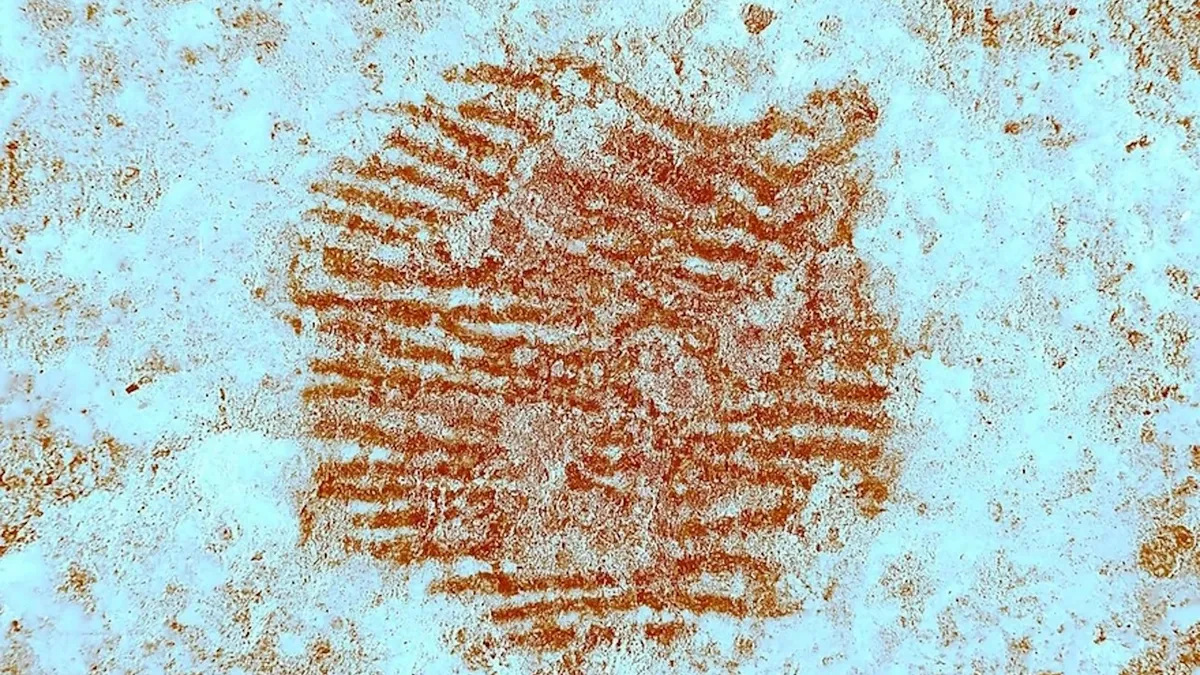
A remarkable find in Spain is drawing attention not only for its age but also for its potential implications regarding Neanderthal creativity. A red dot, located on a face-shaped rock, is estimated to be around 43,000 years old and may represent the oldest human fingerprint ever found, as well as one of the earliest examples of symbolic art in Europe. This discovery, made by researchers at the San Lázaro rock shelter near Segovia, highlights the fascinating intersection of archaeology and anthropology as it challenges preconceived notions about Neanderthals.
The fingerprint, created using the natural pigment known as red ocher, was left by a Neanderthal—our closest extinct relative. While Neanderthals went extinct approximately 40,000 years ago, they inhabited Europe for hundreds of thousands of years prior to the arrival of early modern humans. The implications of this discovery challenge the long-held belief that Neanderthals were incapable of producing symbolic art.
Researchers argue that the red dot signifies a nose on a rock that exhibits face-like characteristics. This interpretation raises important questions about the cognitive abilities of Neanderthals and their capacity for symbolic expression. However, some experts remain skeptical about whether the red dot truly represents a symbolic object. Bruce Hardy, an anthropologist and archaeologist at Kenyon College, noted that while the red dot was undoubtedly intentional, its meaning is open to interpretation. He remarked, “I did not see a face—symbolism is in the eye of the beholder.”
The study detailing this find was published on May 5 in the journal Archaeological and Anthropological Sciences. The rock itself, measuring approximately 6 inches (15 centimeters) long, resembles a large potato and features eyebrow-shaped indentations. The addition of the red dot gives it a primitive appearance of a human face, which researchers assert indicates a level of creativity and cognitive complexity in Neanderthals.
Forensic examinations revealed that the red dot was made using a fingerprint with a distinctive whorl pattern, likely belonging to an adult male Neanderthal. The granite pebble appears to have been intentionally selected and brought to the rock shelter, possibly sourced from a nearby river. The deliberate marking of the rock with ocher suggests an ability to symbolize, imagine, and project thoughts onto a physical object, according to the research team.
The question of whether Neanderthals created abstract art has sparked extensive debate among archaeologists for decades. Previous finds, including cave engravings in France dating back up to 75,000 years, have been scrutinized, especially when compared to the more sophisticated cave paintings created by early modern humans. Paleolithic archaeologist Rebecca Wragg Sykes suggests that the authors of the study may have misinterpreted the meaning of the red dot, indicating that its interpretation could vary based on perspective.
Durham University archaeologist Paul Pettitt, who was not part of the study, emphasized that this rock provides clear evidence of Neanderthal use of red pigment, indicating they were capable of leaving marks on both portable objects and cave walls. However, whether the red dot carries true symbolic significance remains an open question. Derek Hodgson, an expert in prehistoric cave art, added that the rock only appeared face-like after the red dot was applied, further complicating the interpretation.
This discovery contributes to the expanding body of evidence that Neanderthals created non-functional objects, suggesting a more complex cultural and cognitive landscape than previously understood. As research continues, the implications of this and similar findings may reshape our understanding of Neanderthal life and their capacity for creativity.